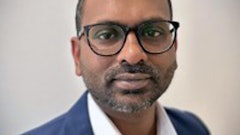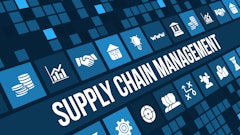The global pharmaceutical supply chain is one of the most complex there is, as you may guess when looking at what the World Health Organization (WHO) says is a $300 billion a year—and rising—industry. The regulatory issues alone can be overwhelming. Security and supplier visibility also are vital.
“I think the major driver is that it’s very much a global supply chain,” says Don Hsieh, the director of commercial and industrial marketing for Tyco Integrated Security. “40 percent of finished drugs and 80 percent of active ingredients are imported. When you have a global supply chain, a lot of different suppliers and distribution centers, the number of vulnerabilities is extensive.”
There is, of course, patient risk, but also brand-name and business risk. Following the 1982 Tylenol poisoning case that killed seven people in the Chicago area, it took years and millions of dollars to regain public trust and market share—even though the company had nothing to do with the incident.
The Issues
The industry, he points out, faces four sets of issues: intentional adulteration; cargo theft; counterfeit drugs; and diversion.
- “Intentional adulteration is usually for economic gain,” Hsieh says. “A few years ago, another product was substituted into Heparin [a commonly used anti-coagulant] and caused multiple deaths. Intentional adulteration is unique in pharma.” The U.S. Food and Drug Administration (USDA) reported that at least 81 deaths were believed to be linked to the incident from a raw Heparin ingredient imported from China, and that they also received 785 reports of serious injuries associated with the drug’s use.
- “Cargo theft is one thing that affects pharma uniquely,” Hsieh points out. “In general, if you lose a product, you lose revenue, but in pharma, because it’s only tracked at the lot level, not shelf-keeping unit (SKU), if there’s a theft, the whole batch has to be destroyed. A couple of years ago, an Astellas driver’s truck was hijacked while he was taking a shower. The truck’s contents were a $10 million loss, but the total loss was actually $50 million just due to one cargo theft.” (Work is being done to trace contents down to the individual packing level. It requires some government and industry cooperation. Nothing has been finalized yet.)
- Even if counterfeiting drugs is done only for profit motives, the danger to health is real and serious. In an October operation in Southern Africa, Interpol seized almost 100 tons of illicit and counterfeit medicines. More than 900 officers from five countries—Angola, Malawi, Swaziland, Tanzania and Zambia—took part in about 550 raids and inspections in marketplaces, pharmacies and clinics, along with illicit care centers and outlets in 30 cities and border points. The counterfeit medicines were estimated to be worth $3.5 million.
- Diversion is simply changing where the product is intended to go,” Hsieh explains. “Instead of going to one market, it’s sent to another. It may or may not do harm to health, but it’s not where it’s supposed to be. There was a major issue with Avastin where counterfeit Turkish drugs were sold into the U.S.”
The National Association of Boards of Pharmacy (NABP) estimates that 1 to 2 percent of drugs in North America are fraudulent. Worldwide drug counterfeiting generated an estimated $75 billion in 2010, according to the Center for Medicine in the Public Interest. The NABP says that the composition of fraudulent drugs ranges from crude mixtures of glue, chalk and sugar to nearly exact chemical replicas of complex pharmaceuticals (see sidebar).
The Solutions
As pointed out, the spectrum of issues is wide and deep. The Pharmaceutical Security Institute tracks about 2,000 incidents a year. As with any business, Hsieh says, the first step is a risk assessment of your suppliers.
“When you’re sourcing the material, the risk and security assessment has to be the same as you’d expect in your own facility. Are they sourcing materials from legitimate suppliers? Can they address their sourcing issues?”
Take advantage of technology to control facility access. Pharma facilities have sensitive areas: A batch of drugs in one lot can contaminate others if they’re in the wrong place. “Large numbers of different technologies apply,” Hsieh says. “Electronic access and (radio frequency identification) RFID can put a virtual fence around the area. Only people with authorization can be in there. Without it, there’s an immediate alert.” Something as simple as uniform color can help. If someone in a blue uniform wanders into a red-only area, there’s an alert."
Remember that driver whose truck was hijacked while he took a shower? Technology can help there, too. The minimal is global positioning systems (GPS) that follow when the driver is on route and off, but companies need to be much more proactive. For example, use locks on the trailers that can be opened only remotely and by pin code access.
“If the truck is hijacked by threat, the driver can alert his base, which can remotely stop the truck, by slowing it down,” Hsieh says. “The product is never out of hand to get adulterated. From an industry perspective, cargo theft is coming down. In 2009, it was an average $3.8 million load loss, now it’s under $500,000.”
All of this involves patient trust and consumer trust. In this era of social media and instant news, confidence can be eroded in days. The risk to not protecting your brand is huge. That’s an important consideration in a company’s business case.


















